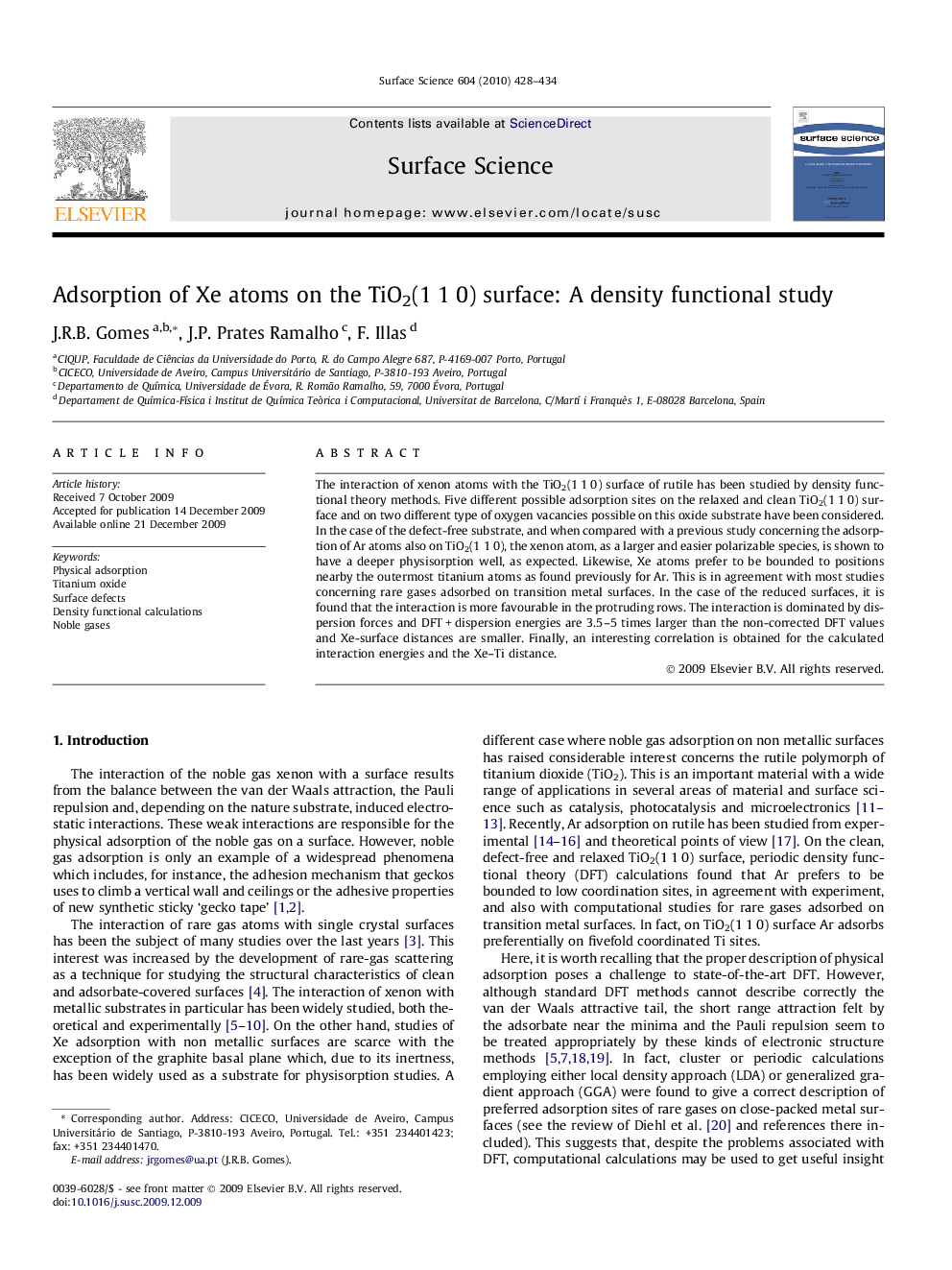| Article ID | Journal | Published Year | Pages | File Type |
|---|---|---|---|---|
| 5424147 | Surface Science | 2010 | 7 Pages |
Abstract
The interaction of xenon atoms with the TiO2(1Â 1Â 0) surface of rutile has been studied by density functional theory methods. Five different possible adsorption sites on the relaxed and clean TiO2(1Â 1Â 0) surface and on two different type of oxygen vacancies possible on this oxide substrate have been considered. In the case of the defect-free substrate, and when compared with a previous study concerning the adsorption of Ar atoms also on TiO2(1Â 1Â 0), the xenon atom, as a larger and easier polarizable species, is shown to have a deeper physisorption well, as expected. Likewise, Xe atoms prefer to be bounded to positions nearby the outermost titanium atoms as found previously for Ar. This is in agreement with most studies concerning rare gases adsorbed on transition metal surfaces. In the case of the reduced surfaces, it is found that the interaction is more favourable in the protruding rows. The interaction is dominated by dispersion forces and DFTÂ +Â dispersion energies are 3.5-5 times larger than the non-corrected DFT values and Xe-surface distances are smaller. Finally, an interesting correlation is obtained for the calculated interaction energies and the Xe-Ti distance.
Related Topics
Physical Sciences and Engineering
Chemistry
Physical and Theoretical Chemistry
Authors
J.R.B. Gomes, J.P. Prates Ramalho, F. Illas,
